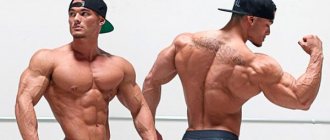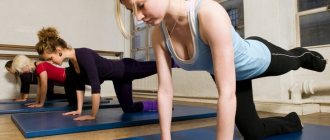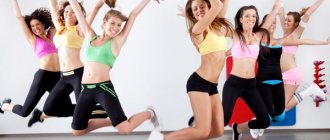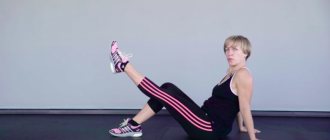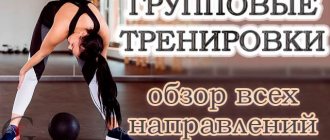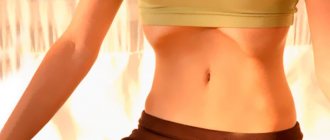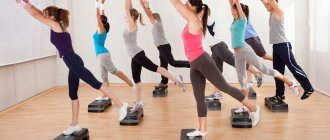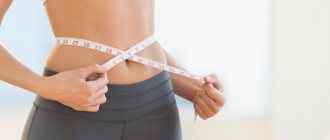A children's orthopedic mat is an excellent preventative measure in the fight against flat feet. The surface of the mat has a relief structure, and since there are many biologically active points on the foot, walking on it completely replaces massage.
As a result of exercising on an orthopedic mat, the leg muscles are trained, the lower legs and arches of the feet are strengthened, blood circulation is improved and fatigue is relieved from the legs. You can read about the benefits of orthopedic mats in our article.
The use of a massage mat is indicated for children from the moment they begin to stomp or walk steadily. During the procedures, the arches of the feet are correctly formed, and the general condition of the musculoskeletal system improves. The likelihood of developing scoliosis and osteochondrosis in the future is reduced.
Exercises on the mat can be done at home, they do not take much time and do not require special training. It is better to practice in pairs with children under 3 years of age. Just 5 minutes a day and exercise will give positive results.
Start performing a set of exercises with a warm-up to warm up your muscles and prepare them for the load. Starting position – back straight, hands on waist. Feet barefoot or in thin socks.
Knee lift
Exercise tones the buttocks and removes cellulite from them. Get on all fours. Leaning on your hands and one knee, lift the other leg without extending it so that your thigh is parallel to the floor. The toe is turned towards itself. From this position, straighten your leg with your heel up and lower it again so that your knee is at the level of your pelvis. Do not bend in the lower back, the movement comes from the buttocks! For convenience, you can bend your arms at the elbows or even rest on your elbows.
Repeat 30 times and change legs. Perform 1-2 sets on each leg.
Article on the topic
Male figure. Gymnastics for the stronger sex
What are the benefits of floor exercises?
Since most of them are performed lying down, such complexes do not overload our joints and cardio system. “In exercises lying on the floor, there is no axial load on the spine,” says Diana Ibragimova , trainer of the Fitness Territory network of clubs and author of the Instagram blog @di.fitt. “Therefore, they are suitable for people who have hernias, protrusions and other contraindications for working with weights.”
In general, sets of exercises on the floor involve gentle work. “They usually focus on strengthening the core, the muscles in the center of the body. Thus, exercises on the floor are more often rehabilitation, exercise therapy, low-intensity work and are suitable for those who cannot overexert themselves, for example, due to heart problems. The pulse will not change much, because we are lying down and not jumping,” adds Diana Ibragimova.
What fitness goals can you achieve with floor exercises?
With similar sets of exercises you can tone your muscles. “On the floor you can work the muscles of the back, abs, arms, and buttocks. Most often, isolated exercises are performed on the floor. The basic ones include push-ups and planks – static and dynamic,” adds Elena Chindyaeva , personal trainer, author of the Instagram blog @chindaeva_fit, nutrition consultant.
But there are some fitness goals you won't be able to achieve with these exercises. “You won’t be able to build muscle mass - for this you need to work with weights, but for tone, a good figure, and good health, this load will be enough,” says Diana Ibragimova.
And serious fat burning will not happen, since you will not be able to “play” with the heart rate as with other workouts.
You can make classes with such complexes more difficult by using additional equipment. “Fitness bands can be additional equipment for working out the muscles of the legs and buttocks. For the muscles of the arms and shoulders - these are dumbbells, a body bar, a barbell,” says Elena Chindyaeva.
Six pack
This exercise tightens your stomach and helps you define your abs. Lying on your back, place your knees bent on the floor, arms outstretched to the sides. Lower your chin to your chest, raise your arms and stretch them forward to your knees, tilting your head and lifting your neck, shoulders and, if possible, shoulder blades from the floor. The lower back is pressed to the floor all the time; to do this, lower your chin to your chest. Return to the starting position by throwing your head back and spreading your arms.
Repeat 10–15 times. Perform 2-3 approaches.
How to help a child learn to crawl
Do light massage and simple exercises with your baby every day. The gymnastics complex will be suggested by your local pediatrician or nurse. This helps strengthen muscles and joints and prepare the baby for crawling.
It is recommended to conduct a course of professional massage once every three months (unless the neurologist or orthopedist has other indications).
Set an example: pediatricians say that children crawl more actively when their parents crawl with them.
Use special activities that “show” the child how to move in order to crawl.
Slim stomach
Tightens the stomach, removes its “overhang” in front above the belt. Lying on your back, stretch your legs, place your arms along your body. Raise your legs, bend one halfway and pull your knee to your chest, and lift the other straight above the floor. Return to the starting position and switch legs. For comfort, lean on your resting hands.
Repeat 10–15 times. Perform 2-3 approaches.
First reader: Dmitry Koldun
– I regularly visit the gym and swimming pool. I don't eat much in the evenings. I choose foods rich in protein, with minimal sugar and fat. And if I want something that is not entirely healthy, then sometimes I allow myself to do it exclusively in the first half of the day. I monitor my weight so that I can respond to changes in a timely manner and see the results of working on myself.
With so many high-tech sports equipment available in gyms these days, many are beginning to forget the potential of the humble fitness mat. Therefore, we decided to take the responsibility to restore the reputation of the fitness mat and want to remind you that no matter what, it remains one of the best sports accessories necessary for the comprehensive development of the body. In this post, we'll show you 8 exercises using a fitness mat that will better prepare you to explore more advanced gym equipment and its ability to provide a complete workout. With the help of a fitness mat, you can achieve significant progress in components such as body strength, muscle endurance and flexibility. To do this, it is necessary to perform both compound and isolated exercises. Compound movements are based on the coordinated actions of several muscle groups, thus, two or more joints are involved in performing such exercises. Incorporating a small amount of compound exercises into your workout will increase the effectiveness of your workout and benefit you greatly. USING MORE MUSCLE GROUPS AT THE SAME TIME MEANS THAT... • More calories are burned • Coordination and balance are improved • Chance of injury during sports or other activities is reduced • Heart rate increases, resulting in improved cardiovascular performance • Muscular endurance and endurance increases strength so you can train for longer periods of time. Isolation exercises work only one muscle or muscle group at a time. By doing such exercises, you can focus on training a specific part of your body and train different muscle groups accordingly. The advantages of isolated exercises are... • The ability to restore the strength of a specific muscle (for example, after an injury) • The ability to increase both the size and endurance of a certain type of muscle • The ability to observe the effectiveness of training each group of mice • The ability to focus on a separate muscle group and make a complex perform the exercises more perfectly BEFORE STARTING YOUR TRAINING... Determine your goals. Each person has their own expectations from training and their own preferences regarding different training methods. Choose those that suit you and that are within your power. Practice being selective! Make your workouts interesting by adding new exercises or new variations of existing exercises. If you enjoy your workout, you'll be more likely to achieve your goals. COMPOUND EXERCISES WITH A FITNESS MAT... Squats Muscles worked: glutes, quads, hamstrings, calves and abdominals Practical tips: • Keep your back straight • Squat down and tighten your abdominal muscles • When you feel more confident, try squat lower • Longer hold in the squatting position will increase muscle endurance Push-ups Muscles worked: triceps, abdominals, back muscles, deltoids, pectoral muscles Practical tips: • Keep your back body straight from head to toe • Lower yourself slowly so that the muscles are working at maximum load • Increase the number of repetitions to increase the level of difficulty Lunges Muscles worked: hamstrings, quadriceps, glutes, calves and abdominal muscles Practical tips: • Keep your back straight • Do not touch the floor with your bent knee • Be aware of your balance between lunges • Holding dumbbells will increase the intensity of the exercise • Doing the exercise slowly will help achieve maximum effectiveness • Engage the deep core muscles, maintain tension in the abdominal muscles Superman (arm and leg extensions) Muscles worked: abdominals, glutes muscles, lower back, quads, biceps and triceps Practical Tips: • Maintain tension in your abdominal muscles • Keep your head low and make sure your spine remains straight • Stay in an extended position for longer to increase the intensity of your workout and improve your coordination • Movement should be slow and controlled ISOLATE EXERCISES WITH A FITNESS MAT... Bridge (supine hip raise) Muscles worked: gluteal muscles Practical tips: • Make sure you have good balance before performing the exercise • Keep your shoulders firmly on the floor • Lift hips higher, you will increase the level of difficulty of the exercise and increase muscle strength • Maintain tension in the gluteal muscles and abdominal muscles • Plank Muscles worked: back and abdominal muscles Practical tips: • Increase the time spent in the plank position to increase the difficulty of the exercise • Hold your back straight • This is a great exercise to help prepare for push-ups! Crunch Muscles Worked: Abdominals Practical Tips: • Shoulders should only lift a few inches off the floor • Remember that the movement is generated by the abdominal muscles, not the neck or back • Hold the elevated position for a couple of seconds to the best of your ability Leg Curls hamstrings (lying down) Muscles Worked: Hamstrings Tips: • Bend and straighten your legs in a slow, controlled motion • Maintaining tension in your abdominal muscles will help maintain balance and increase core strength • Bend your legs at a 90-degree angle and lift your heels to the ceiling; thanks to this, the gluteal muscles will develop and new elements can be added to this exercise. Including these exercises in your weekly program will have a positive effect on the strength and endurance of your muscles, and will also complement and improve your workouts... Thus, it turns out that the fitness mat is an element sports equipment with which you can work on almost all muscles of the body, and even choose how to do it!
Rules for performing gymnastics
The load increases gradually. There should be no pain during the exercises. First, you need to do several repetitions of each exercise, and over time, their number needs to be increased. The workout should be done comfortably. Systematic approach to training. During training, exercises are first performed to compress the pelvic floor muscles, and then to relax them, then push-out exercises are done. When performing each exercise, make sure that only the pelvic area is tense. The buttocks, thighs, and abdominal wall should be in a relaxed state. Before performing Kegel exercises, you should empty your bladder. This will avoid pain during exercise and stretching of the bladder tissue.
To achieve success and see the results of using the exercises, you need to learn how to perform them correctly. You cannot do without the help of a professional; a specialist teaches the correct technique for performing exercises and selects a suitable complex depending on the patient’s problem. The “Quality of Life” Rehabilitation Medicine Clinic invites you to consult with physical therapy doctors. Our physical therapy instructor Marina Osokina will teach you how to perform the exercises correctly.
Complex for treatment and correction of clubfoot
The complex helps with clubfoot, when the foot deviates inward from the longitudinal axis of the tibia.
- Walking back and forth – 5 minutes.
- Walking on your heels – 3-5 minutes.
- Walking with feet apart – 3-5 minutes.
- Walking “X”, trying to stand on the inside of the foot – 3-5 minutes.
- Walking “like a clown”: put your heels together and move your toes to the sides, as far as possible. We walk, trying to maintain the original position - 2-3 minutes.
- Walking with high knees – 5 minutes.
A complex approach
In our clinic, to achieve maximum effect in working with muscles, we offer patients complex treatment: exercises and osteopathy. The presence of chronic diseases in the pelvic organs, accompanied by venous and lymphatic congestion in this area, is directly related to impaired blood circulation and innervation. This condition could be caused by bruises, fractures of the pelvic bones, injuries to the pelvic tissue during childbirth, or hormonal disorders. All this actively forms dysfunction in muscle function. Osteopaths have unique manual techniques in their arsenal that allow them to prepare tissues in a given region for further work with a movement specialist (kinesitherapist).
Until the muscle is fully innervated and supplied with blood, exercises can make the muscle work fully, but this process is delayed.
The osteopath restores the mobility of the pelvic bones, removes intraosseous tension, and relieves tension from the dura mater. Allows the pelvic floor muscles to be a good link between the chest and lower extremities, which is a good prevention of vascular and orthopedic diseases. Osteopathic treatment and physical therapy strengthen the pelvic area with its muscles, organs, bones, improve human health, and improve the quality of life. Therefore, we actively recommend an integrated approach to rehabilitation. This helps keep your pelvic floor muscles in check.
Similar articles:
- Directions
- Specialists
- For visitors
- Articles and videos
ONLY UNTIL January 31st!
20% DISCOUNT ON CLASSES ON THE REDCORD SUSPENSION SYSTEM
Classes are conducted by instructor-methodologist Osipova Maria.
REDCORD allows you to eliminate muscle imbalance by relaxing some muscles and stimulating others. This allows you to resume the motor pattern and return the patient to normal functioning!
Contraindications
Before starting therapeutic exercises, consult with your doctor to find out if you have any contraindications to exercise. Contraindications: Pregnant women without permission from a doctor, with a low position of the fetus, premature dilatation of the cervix, hypertonicity or hemorrhoids. The postpartum period in women, if 24 hours have not yet passed after natural birth. Oncology.
A specialist in therapeutic exercises will show you how to perform the workout correctly, help you learn to repeat after him and do everything correctly yourself. At home, you can regularly include a set of muscle development exercises in your exercises to maintain muscle tone.
Main manufacturers
- Demix is a Russian manufacturer of gymnastic mats. The cost of products depends on the materials, sizes range from 140 to 170 cm in length and 50 cm in width. Approximate cost from 249 to 1999 rubles.
- Kettler is a Chinese manufacturer of yoga and fitness mats. They have a non-slip surface, from 172 cm in length and 61 cm in width. Easy to clean and dry quickly. Product prices range from 2199 to 2999 rubles.
- SKLZ is a Thai manufacturer of fitness mats. The average length of the mats is 183 cm, width - 61 cm. Thickness 0.6 cm. A special feature of the manufacturer is the application of drawings - diagrams of 24 exercises. Such products reach a cost of up to 3,999 rubles.
- Reebok is a well-known brand all over the world; they produce several lines of fitness mats. Ab mats are thick mats for performing exercises on the floor, for example, abdominal exercises. Workout mats – folding mats for fitness, and mind body – special mats for yoga and Pilates.
Why do you need to exercise on a massage mat?
We have already described in detail the benefits of a massage mat in the article “How to choose a massage mat for children.” It is worth highlighting the main reasons for practicing:
- Walking barefoot on uneven surfaces affects the points of the foot associated with the internal organs.
- The effect on nerve endings stimulates the nervous system and the cerebral cortex, helping with overall development.
- Stimulation of certain reflexogenic zones stimulates the immune system.
- Training the muscles and ligaments of the legs from an early age - preventing foot deformities.
- Exercises on an orthopedic mat help treat clubfoot, flat feet and other pathological changes in the legs.
Reverse crunches
These effective abdominal exercises are not always easy for girls, but the results cannot leave any athlete indifferent.
- Lie on your back again and place your feet close to your hips, resting on the floor.
- Hands are placed along the body, palms down.
- Raise your bent legs, bringing your knees to your chest, touching your thighs to your stomach.
- In this case, the lower back and pelvis are lifted off the mat, and the body weight is transferred to the upper back.
- Lower your legs and repeat 10-12 times.
Bringing your legs together in the air
Stretch out on the mat, raise your head and upper back a little, your legs should also be in the air, not high. Move them apart and bring them together, maintaining a constant height. Your back should lie well on the floor.
The load is distributed not only on the abdominal muscles, but also on the legs. Do 18-20 of these movements.
How to choose a yoga mat
These are the top ten best yoga mats. And Yanina Molchanova, who has been practicing yoga for several years, will give useful recommendations that will help when choosing this equipment.
Any yoga mat must meet the following parameters:
- hygiene and ecology,
- symmetry,
- friction,
- elasticity,
- suitable dimensions.
Hygiene and ecology
The physical, organoleptic properties, as well as the impact on health, directly depend on the material of manufacture. The smell from a cheap PVC mat can discourage a productive workout. Certain materials may cause an allergic reaction in exercisers. In general, a better decision is to choose well-known brands that are responsible for the quality of their products. The same PVC mat from Germany is much more environmentally friendly than cheap rubber from Aliexpress. Regarding materials of manufacture, the following classification is appropriate here:
- EVA (EVA). A simple and inexpensive option. The material is a modern polymer ethylene vinyl acetate. They are lightweight, hypoallergenic, and easy to carry. However, they wear out quickly. A characteristic feature is low friction, which causes some inconvenience during training - you can slide.
- PVC. Polyvinyl chloride is a very common material for making rugs. Compared to EVA, it is more durable and wear-resistant. Modern PVC mats are resilient, soft and dense. Anti-slip qualities entirely depend on the manufacturer and the technique he uses. It is better to give preference to European manufacturers, especially Germany.
- TPE. Thermoplastic elastomer mats are among the more professional options. The material gives the rug a number of advantages - elasticity, softness, pleasant to the touch, antibacterial. They do not fade in the sun. A very good option for training, as it has high anti-slip properties. The downside is that in the presence of moisture, the level of slipping increases significantly.
- Rubber. One of the best options for yoga. An excellent choice for both professionals and confident amateurs. Pros - high grip on the body, slipping is excluded, even with wet feet and hands. Natural, pleasant to the touch, environmentally friendly. The weakness of this material is its high cost and not so high durability.
- Cork. The top layer of the mat is made from this material, and the bottom component can be made of rubber, TPE or PVC. Such mats do not have a reinforcing mesh; its role is played by the cork layer itself. It is comfortable to perform asanas on a cork mat. Another advantage of these mats is the ease of applying the pattern. A fairly wear-resistant mat that is not afraid of creases. Easy to repair with wood glue. The mat is cleaned manually.
- Polyurethane (PU). Polyurethane rugs appeared not so long ago, but have already gained considerable popularity. This has an obvious explanation - hygiene, durability, excellent grip, bright design. Able to hold wet limbs well, in a dry state there is a very high friction index. From experience, I can note that some printed PU rugs can slip. Therefore, it is better to test them before purchasing. There are rugs with poor quality polyurethane. Usually, they are distinguished by their low price and are not durable.
- PER (Polymer Environmental Resin). A modern material similar to PVC, but with greater concern for the environment. It is distinguished by the complete absence of toxins, heavy metals and other harmful impurities. There is almost no smell. Characteristic features are elasticity and good friction. Can be combined with jute reinforcement.
- Microfiber. Microfiber yoga mats are designed for the application of bright, eye-catching color patterns. It looks very impressive, but unfortunately, it has a high level of slipping. Dry friction is minimal on such a mat, which gives increased load when performing asanas with emphasis. When the limbs are sweaty, the level of friction increases, therefore, training should be of good intensity.
- Jute. This material has high wear resistance. Typically, a reinforcing mesh is made from jute, which is soldered into the mat, which gives it high strength and an unusual appearance.
- Cotton. The material is traditional for yoga classes. Before modern times, most practiced on ordinary cotton mats. Such a rug must be thick. The threads should be large. Cotton thread is quite coarse, and quite unpleasant sensations may arise.
Symmetry
The ideal shape for a rug is rectangular. It's also great to have markings on the mat, especially for beginners. There are rugs with beveled edges. On such a mat, due to inexperience, it is inconvenient to maintain the symmetry of asanas.
This is interesting
The best horizontal bars for home
Friction
If the mat has low friction, then when performing asanas, you will slide quite a lot. This is quite traumatic, especially if the training is high intensity. The stickiest mats are made from rubber. But there is a downside to the coin - the better the friction, the faster the mat wears out.
Elasticity
The overwhelming majority of rugs are reinforced, that is, they have a mesh-like frame inside and a textile core. This technology increases the rug’s strength, durability and prevents it from stretching out. It happens that reinforcement performs functions in one direction. For example, a rug is not deformed along its length, but is very vulnerable across. It's worth checking before purchasing.
Suitable dimensions
If your training is dominated by static practices, then the length of the mat should be equal to your height, plus or minus 5 cm. If there is a greater emphasis on intense dynamics, then it is better to take a length reserve of 20-20 cm. The standard width for the mat is 60 cm. As a rule, this is quite enough. But for people with a large build, there are mats with a width of 80 cm. The thinner the mat, the more comfortable and compact it is. However, with a smaller thickness, the rigidity is higher. In my opinion, the optimal thickness is 4.5-6 mm. Rugs with a higher thickness are characterized by worse stability. When traveling, mats with a thickness of about 3 mm are more suitable.
Care Tips
Yoga mats are treated with a special compound to prevent sticking during transportation and storage. Therefore, the new rug needs to be washed in a machine, without using powder. When the mat becomes dirty, it is necessary to wash it, which will improve its “stickiness”. Storage should be done rolled up. The rug must be rolled up with the bottom side inward. This will eliminate any upward folding on the edges. Folding the rug is not the best solution, as furrows form over time. These areas are where the rug is especially susceptible to wear and tear.
Games for children using a massage mat
Due to the unusual texture of the mat, the child may refuse to practice. The presence of bright elements, geometric shapes, and multi-colored bumps on the rug can be used for play. The game will attract children's attention and stimulate them to do exercises.
Game “Beetle”
In this game, the child must act out the actions in a rhyme.
The feet and palms will be massaged in a playful way. On a flower, two bugs danced, gopachka
- we march in place,
With our right foot, stomp, stomp
, we stomp with our right foot 2 times,
With our left foot, stomp, stomp, stomp
with our left foot 3 times,
Wings raised up: “Who flies the fastest?”
- you need to jump off and run around the rug.
So we arrived, sat on the flower
- we return to our place, squat down and touch the rug with our palms.
Game “Treasure Hunters”
This is a group game that trains the feet and is aimed at preventing flat feet.
We scatter coins or other game elements on the mat. Children wait for the starting signal and collect “treasures” with their toes. The one who collects them the most wins.
Game “Geese”
The game strengthens the muscles of the torso, arms and feet.
Start – at the beginning of the mat. Children should walk across the mat in a squatting, goose step. The one who reaches the end of the mat the fastest wins.
Game “Bouncing Bunnies”
The game develops the attention of players.
Children should listen to the rhyme and jump onto the mat when they hear the word “jump”, and jump off it when they hear the word “jump”.
To maintain attention, sometimes instead of “jump”, say “jump”. Whoever makes a mistake is out of the game. A jumping bunny was walking. He saw a stump - “jump” on it. Tired of sitting on the stump - “jump” from the stump. He goes further. He sees a beautiful fox - “jump” on the stump. The fox left - the bunny “jumped” from the stump, etc.
Game “Cat and mouse”
The game will help strengthen your leg muscles and train vigilance.
“Mice” run around the territory from the “cat” and hide in houses - they jump onto the rug. The last one not caught by the “cat” wins.
